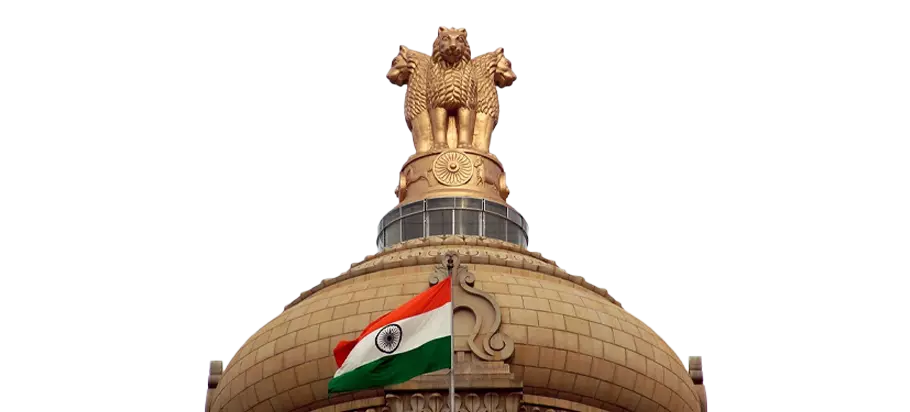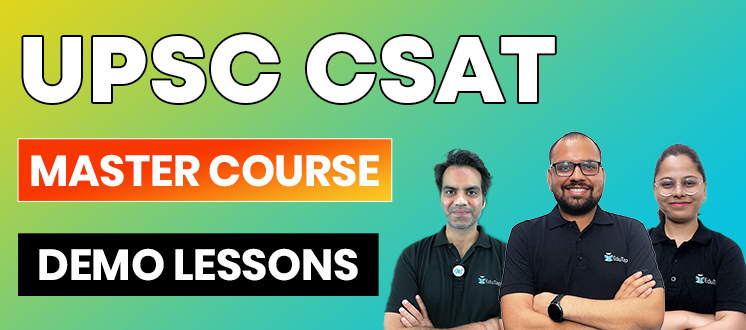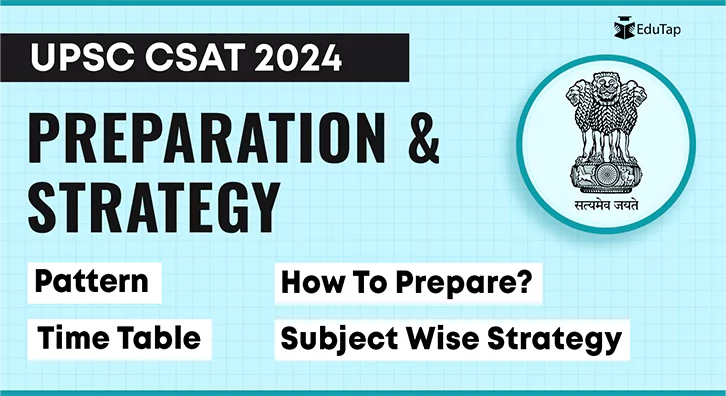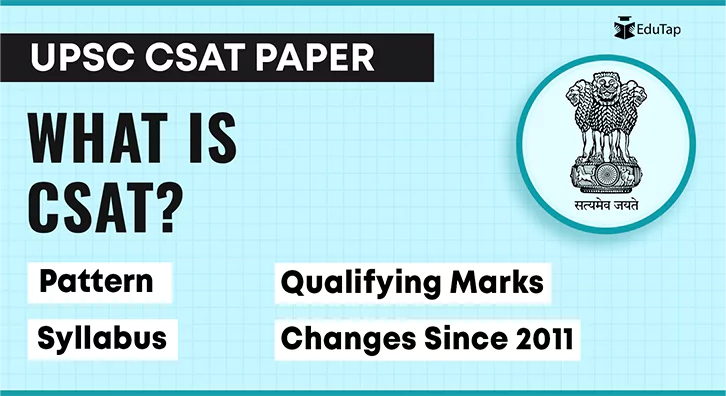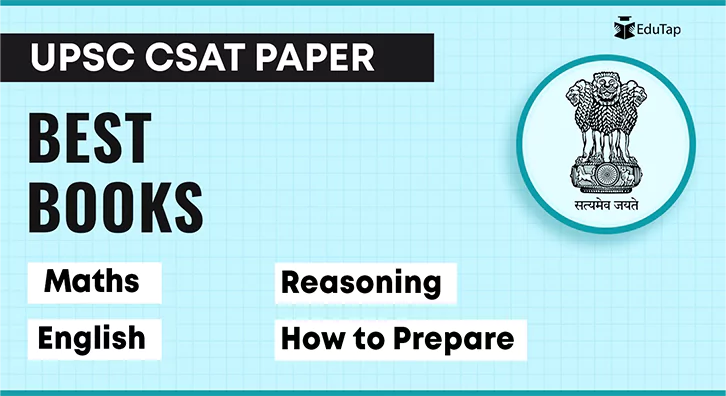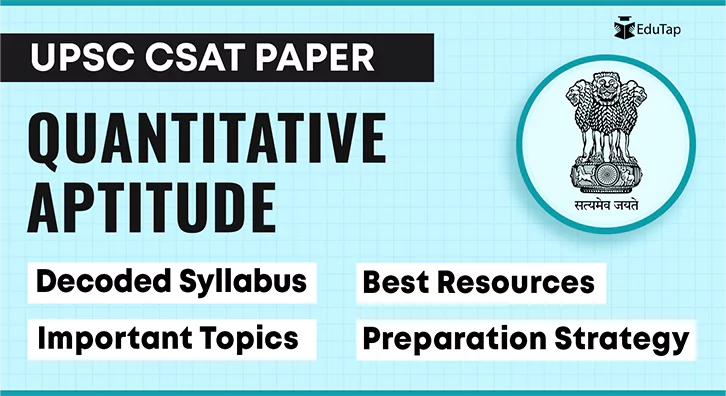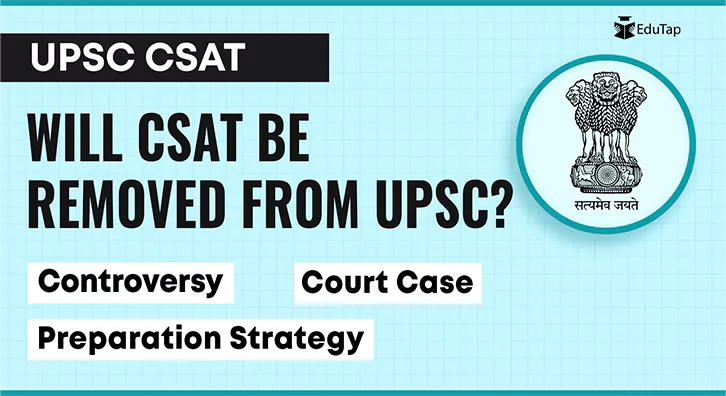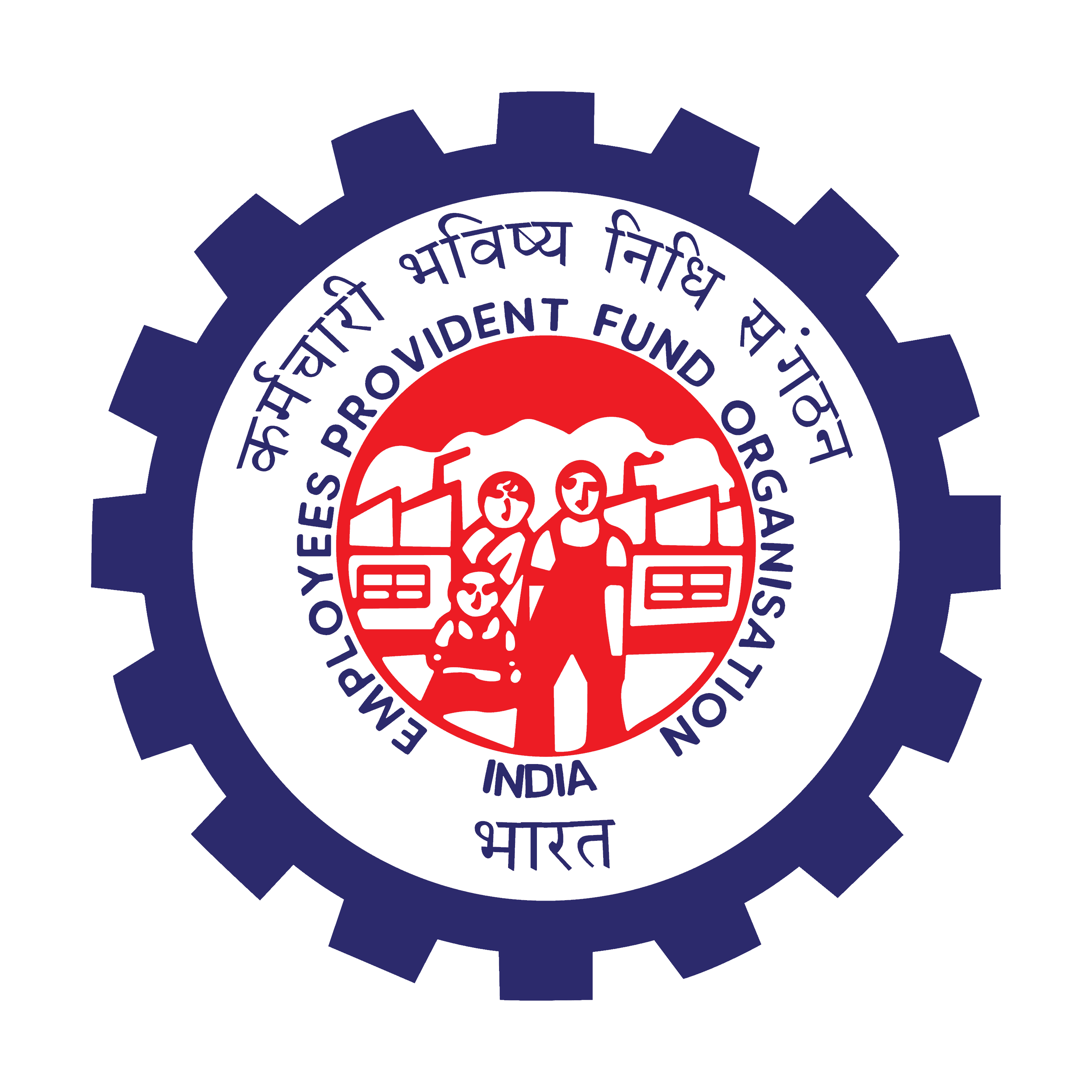Eligibility to appear for the UPSC Civil Services Examination, including the CSAT paper, is determined based on the following:
1. Nationality
For the Indian Administrative Service, the Indian Foreign Service, and the Indian Police Service, the candidate must be a citizen of India.
For other services, certain categories of persons, such as citizens of India, Nepal and Bhutan, Tibetan refugees, and individuals of Indian origin who have migrated from certain countries, may also be eligible, subject to specific conditions. Please refer to the latest official UPSC CSE notification for detailed information.
2. Age Limit
The age limit is sub categorised into two limits: upper and lower. The details of the same are given below:-
| Age Limit for UPSC CSAT | |
| Minimum Age Limit | Maximum Age Limit |
| 21 Years | 32 Years |
Age Limit Relaxation
In addition to the previously mentioned UPSC CSAT age limit eligibility criteria, there are some specific age relaxations for candidates belonging to certain categories, such as Scheduled Castes (SCs), Scheduled Tribes (STs), Other Backward Classes (OBCs), and others. The extent of the relaxation varies based on the category and other factors.
| UPSC CSAT Age Limit Relaxation | ||
| SNo. | Category | Age Relaxation |
| 1 | OBC | 3 years |
| 2 | SC/ST | 5 years |
3. Minimum Educational Qualification
A candidate must hold a Bachelor’s degree from any of the recognised Universities incorporated by an Act of the Central or State Legislature in India or other educational institutions established by an Act of Parliament or declared to be deemed as a University under Section 3 of the University Grants Commission Act, 1956 or possess an equivalent qualification.
4. Number of Attempts
The number of attempts allowed for the UPSC Civil Services Examination varies based on the candidate’s category:
| Category to which the candidate belongs | General | OBC | SC /ST | PWBD |
| Number of Attempts | 06 | 09 | Unlimited | 09 for GL/EWS/OBCUnlimited for SC/ST |
Important Note: The SC/ST category can take unlimited attempts until the candidate reaches the maximum age limit (including age relaxation).
We have explained the CSAT exam pattern below to help you understand the CSAT paper’s marking scheme, mode, and qualifying marks.
Number of Papers
The CSAT is the second paper of the UPSC Prelims, with General Studies Paper 1 being the first paper. The CSAT paper is conducted with General Studies Paper 1 on the same day.
Paper Structure
CSAT Paper 2 is of a qualifying nature and is meant to assess candidates’ aptitude and analytical abilities. It consists of objective-type multiple-choice questions (MCQs).
Time Duration
Candidates have a total of 120 minutes (2 hours) to complete the CSAT Paper 2. During this time, candidates must answer multiple-choice questions (MCQs) that cover various areas such as maths, reasoning, English, decision-making, and data interpretation. Effective time management is crucial to ensure that questions are attempted within the allocated time to score at least 66 marks.
Important note: There is no sectional timing in the CSAT paper.
Total Marks
The total marks for the CSAT General Studies Paper 2 are 200.
Total Number of Questions
There are a total of 80 questions. Each question is worth 2.5 marks, making it a total of 200 marks for 80 questions.
Qualifying Marks
The UPSC CSAT paper is qualifying in nature. With a total of 200 marks available, candidates must score a minimum of 33% marks within 2 hours to qualify this paper, which comes up to 66 marks out of 200.
Negative Marking
One-third of the marks allotted to each question i.e. 0.83 marks are deducted for each incorrect answer. No marks are deducted if a candidate leaves a question blank on the OMR sheet.
Mode of Exam
The CSAT is conducted in the offline mode, also known as the pen & paper mode. Candidates are provided with a question paper booklet and an OMR (Optical Mark Recognition) sheet. They must mark their answers by shading the corresponding circles on the OMR sheet using a black ballpoint pen. The OMR sheet is then collected for evaluation.
Paper Language
CSAT is available in both English and Hindi languages. Candidates can answer the CSAT questions in either English or Hindi based on their language preference. This bilingual approach ensures that candidates who are more comfortable with either of these languages can effectively take the CSAT paper in the language of their choice, providing them with a level playing field during the examination.
For your easy understanding, we have provided the above-mentioned information in a table form below.
| UPSC CSAT Pattern | |
| Total Number of Questions | 80 |
| Total Marks | 200 |
| Per Question Marks | 2.5 |
| Total Time | 2 Hours |
| Negative Marking | 1/3rd, i.e. 0.83 marks |
| Qualifying Marks | 33%, i.e. 66 marks |
| Sectional Timing | No |
| Mode of Exam | Offline (Pen and Paper) |
| Paper Type | Objective |
| Paper Language | English and Hindi |
The official notification of the UPSC Civil Services Examination specifies the syllabus of the CSAT paper as follows:
- Comprehension
- Interpersonal skills, including communication skills
- Logical reasoning and analytical ability
- Decision-making and problem-solving
- General mental ability
- Basic numeracy (numbers and their relations, orders of magnitude, etc. (Class X level)
- Data interpretation (charts, graphs, tables, data sufficiency, etc. (Class X level)
For easy understanding, the above syllabus can be divided into 3 subjects:
- Maths
- Reasoning
- English
| Subject | Syllabus as per UPSC notification |
| Maths | General mental abilityBasic numeracy (numbers and their relations, orders of magnitude, etc. (Class X level)Data interpretation (charts, graphs, tables, data sufficiency, etc. (Class X level) |
| Reasoning | Logical reasoning and analytical ability |
| English | Comprehension |
Important Note:
We have deliberately not listed “Decision Making and Problem Solving” and Interpersonal skills, including communication skills, in the above table, as no question on these topics has been asked since 2014.
This is an overall view of the CSAT syllabus. Below, we have explained the detailed subject-wise syllabus of the CSAT paper.
Maths
Here is the detailed maths syllabus for UPSC CSAT:
- Number System
- HCF and LCM
- Percentage
- Profit and Loss
- Simple Interest
- Compound Interest
- Ratio and Proportion
- Age and Partnership
- Data Interpretation
- Time and Work
- Pipes and Cistern
- Time, Speed and Distance
- Boats and Stream
- Average
- Alligation and Mixture
- Mensuration 2D and 3D
- Permutation and Combination
- Probability
- Number Series
Reasoning
Here is the detailed reasoning syllabus for the UPSC CSAT:
- Syllogism
- Blood Relation
- Direction Sense
- Alphabetical and Alphanumeric Series
- Coding and Decoding
- Analogy
- Calendar
- Clock
- Counting Figure
- Cube and Cuboid
- Dice
- Continuous Letter Series
- Ranking and Order
- Arrangement and Puzzle
English
Reading comprehension is the only topic from which questions are asked in the CSAT paper of UPSC prelims. There are 4 types of passages that are asked. Level 1 passages consist of only 1 question after the comprehension. Similarly, level 2, level 3, and level 4 passages consist of 2,3 and 4 questions, respectively.
The UPSC CSAT paper is qualifying in nature. With a total of 200 marks available, candidates must score a minimum of 33% marks within 2 hours to qualify this paper, which comes up to 66 marks out of 200.
Follow the below steps to prepare well for UPSC CSAT in less time.
Step 1 Understand the UPSC CSAT Syllabus
Understanding the UPSC CSAT syllabus provides clarity on the subjects and topics that candidates need to focus on. This clarity is essential for efficient and targeted preparation, helping aspirants allocate their study time effectively.
Step 2 See Where You Stand
The next step is to assess your current status in this paper by taking at least two recent previous years’ papers. Calculate your score for each paper. Scoring over 80 marks in both indicates proficiency. If your score is below 70, allocate dedicated time and plan your preparation accordingly.
Step 3 Identify Your Strong and Weak Areas
Analyse your performance in CSAT papers. Identify strong and weak areas in maths, reasoning, and English. This analysis forms the basis of your personalised UPSC CSAT prep strategy.
Step 4 Start Slow But Be Consistent
Don’t wait until the last 2-3 months before the prelims if you scored below 70 marks in the previous years’ papers. Start your CSAT preparation now with just 1-1.5 hours daily.
Step 5 Shortlist Your Study Material
Shortlist your UPSC CSAT study materials wisely. Ensure your chosen materials align with current trends, specific to the UPSC CSAT syllabus.
Step 6 Self Study or Coaching
To decide between self-study or coaching, ask yourself if you can analyse past papers, understand subjects using free resources, and maintain self-discipline. If yes, self-study might suffice.
However, coaching offers benefits like expert guidance, PYQ analysis, customised preparation strategy, doubts support, and more. It can help you score 70+ marks and qualify the UPSC CSAT.
SELECT YOUR ONLINE MENTORSHIP COURSE
Strengthen your exam preparation with true MENTORSHIP and choose the course as per your learning needs.
OUR SUPER MENTORS
Meet our extraordinary teachers who are synonymous with expertise in their subjects. They are highly acclaimed for adding immense value to students’ preparation. Our students owe their success to them!

- B.A (Maths), M.Sc (Statistics)
- Exceptional Teaching Skills
- The Ultimate ‘Quant Guru’

- M.A English
- The Ultimate English Mentor
- Our ‘Shashi Tharoor’

- B.Sc in PCM
- Promotes Conceptual Understanding
- Introduces Different Approaches
STUDENT TESTIMONAILS
Listen to our students share their learning experiences as part of the EduTap family!


FREE RESOURCES LIBRARY
Dive deep into our free knowledge library and access Video Lectures, Previous Year Questions, Mock Tests, E-Books, Current Affairs, and more.
Memory-based year-wise compiled previous year question papers of all exams.
Weekly current affairs compilations important covering newspapers and websites.
Online lectures by our expert faculty to build a strong foundation of subjects.
Downloadable PDFs covering important topics in a crisp and easy to digest format.
Chapter-wise, sectional and full-length tests to assess your actual preparation level.
RECOMMENDED ARTICLES
Stay up-to-date with the latest articles written after thorough research of UPSC CSAT exam and excel in your exam preparation.
Frequently Asked Questions (FAQs)
Yes, the CSAT paper is compulsory for all candidates who appear for the UPSC Civil Services Preliminary Examination. However, it is a qualifying nature, and you need to score at least 66 marks to qualify.
The difficulty of CSAT is relative and depends on individual factors. It is essential to identify your strengths and weaknesses, create a well-structured study plan, and practice regularly to maximise your chances of qualifying for the CSAT. Additionally, seeking guidance from experienced mentors can help you navigate the challenges effectively.
The first step in preparing for UPSC CSAT (Civil Services Aptitude Test) is to:
- Familiarise yourself with the CSAT exam format
- Carefully go through the CSAT syllabus
- Pay attention to the exam pattern
No, the CSAT is considered a qualifying paper, and its marks are not added to the final score. However, candidates must secure the minimum qualifying marks (66 marks) in CSAT to be eligible for the Mains.
Create a study schedule that allocates sufficient time to each subject. Consistency is key, and practising time management through mock tests is crucial.
Yes, you can use free online CSAT study materials such as videos, PDFs, previous years’ questions, and practice questions to prepare. A well-rounded CSAT preparation often combines resources to effectively cover all the necessary areas. However, it’s crucial to make sure that you use free material from reputable sources only.
